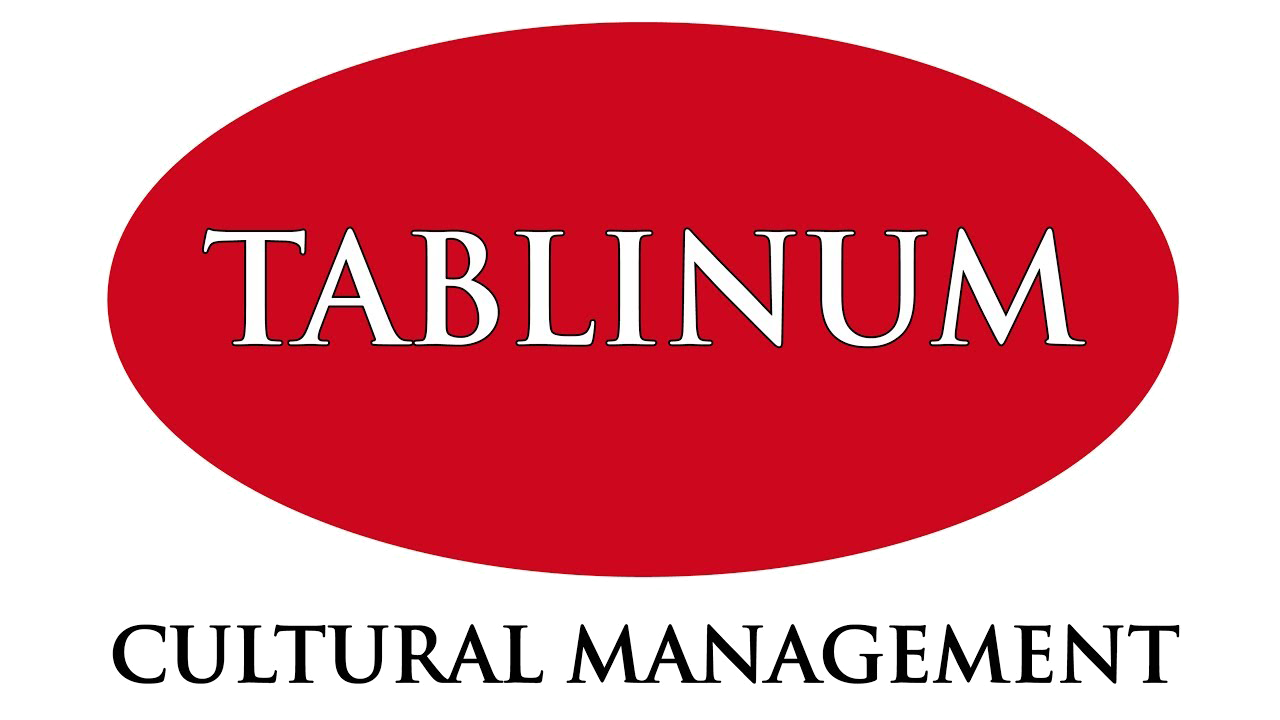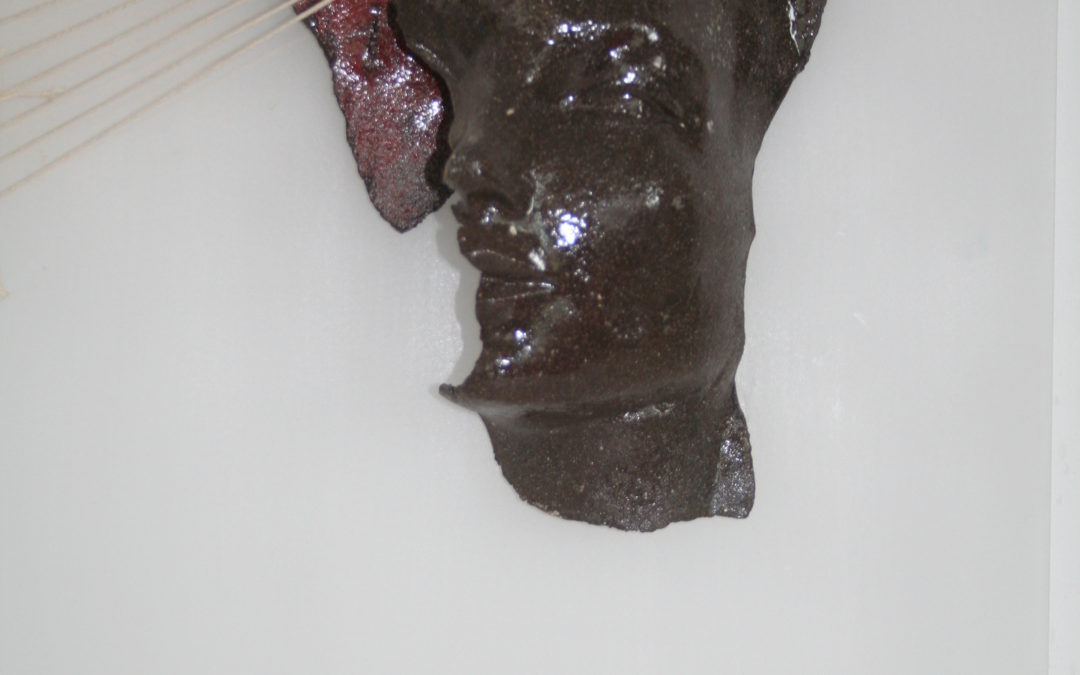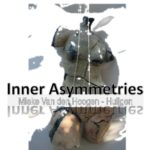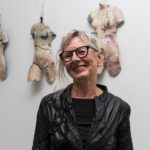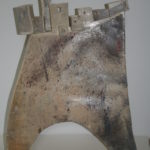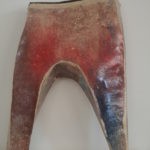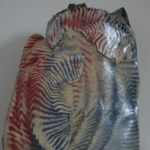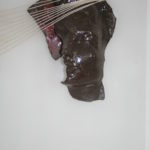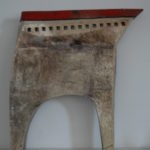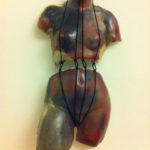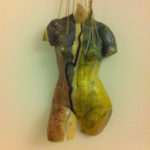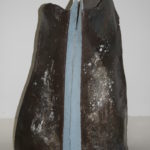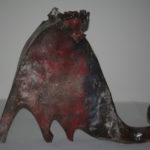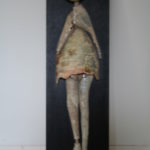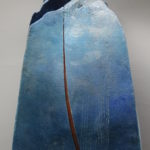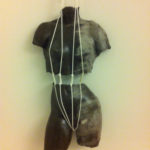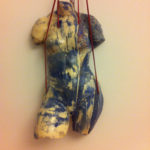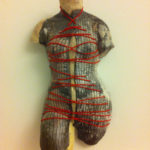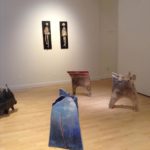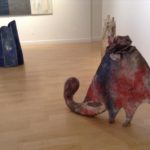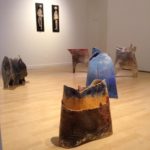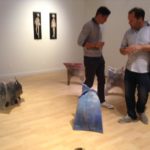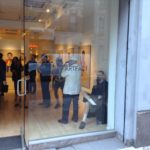Tablinum: certain works of art, as in a mirror, give us not only the external reality of things but also their inner life with all its complex asymmetries and dysmorphic evolutions. This happens with sculptures of the Dutch artist Mieke Van Den Hoogen – Huijgen.
Returning from her last New York expo, which ended in June, Mieke Van Den Hoogen – Hujigen presents to the public of Villa Carlotta a series of ceramics.
These works are inspired by the archaic vases, full of tribal references, made according to ancient Indian and African processing techniques.
Mieke in them combines their artistic feeling with the atavistic impulse of the clay modeling in order to create shapes reminiscent of daily life.
In some sculptures, like Castle, the roughness of the clay is approached to the intensity of the primary colors. In sculptures like Castle, the roughness of the clay is approached to the intensity of the primary colors
It creates a blackout between the highly innovative shape and the reference to arcane gestures that are reinterpreted by a genuine taste of shaping the clay no longer undergo the rigor of a creative process in which the ultimate purpose is the creation of a tool for a daily use.
The common thread with the tradition is interrupted here and it is triggered the creative process of the artist with her own free will to play with shapes and color.
The inner asymmetries is the concept behind the series of female torsos, in which is transposed all the feminine sensibility of an interiority fragmented and prey to conflicting emotions.
We can notice this well in such works as Fixed or series of the female bodies in which we find busts or woman faces fragmented and held together by ropes and string.
The attempt is to reconstruct an identity shattered, or to contain an irrevocable epilogue that underlies a careful autonalisi’s own self.
The raw material is always the clay, with its malleability and adaptability, that technique is well suited to e represent the continuous evolutions of the interiority.
The women’s bodies, here shaped into a bust of classical composure, are fragmented and, often, the pieces are held together by ropes and wires in order to represent the infinite and contradictory lacerations.
Atavistic symbol reveal a symbolic language: golden snakes flowing on a woman’s body in order to evoke the most sinful of the unions or, in some sculptures, the color itself becomes the object of a true metamorphosis that, starting from the shade of color, gives way to scales reptile … lust and sin are hereby confirmed as the oldest and sinful combination that has ever existed.
We would like to ask to Mieke some questions about her sculptures and poetry that pushes artist to create new works of art.
– About your artistic career: there was one particular moment or reason that led you to start?
Before I had an education in art, the academia, I made a study in physiotherapy. This study confronted me with mem, women and children with disabilities I never heard and seen. This made a deep impression on me , I never forgot.
After I failed the last exam I wanted to do something diffrent. I was painting for a long time and I dicided to begin an education in art, becoming a art- teacher. But when I finnished there was no place at all at any school. Then I became mother and I stayed at home for 10 years, in the village we lived was nocreche. After that I wanted to workand to start I followed a new education, in ceramics.
– In your works we find continually recalls to the feminine world. Could you explain what are the emotions that push you to the realization?
The education in physiotherapy was the direction of the interest of my later work, I could not loose what I saw in my first study.
– How do you combine your technique of pottery with your poetry?
For me it is challenge to make objects as thin and as great as passible without breaking the piece of clay. I like to use all kind of colours and structures, even sand and ashes. But I also use lace topress it in the clay, using my fantasy by working.
You can make the skin of the clay more expressive when you are building instead of carving.
– A few months ago you held a solo exhibition in New York. How was your experience of European artists exhibiting in the Big Apple? Have you noticed any difference in the public or in relationships with collectors?
Mieke Van den Hoogen Huijgen has focused on ceramics from 1987 to 1991 at the University of Maastricht.
Since February 1992 he founded his own studio in Elsloo and then moved to Nijmegen since 1997.
During her studies at the University of Maastricht her interest was focused particularly on ceramics and about the expressive possibilities of the small fragment, where thanks to the lessons of Desiré Tonnaer (Maastricht) and Piet Hermans (Venray) she examined its potential, especially in monumental objects.
She write about her works: a woman’s body fascinates me not because it represents an ideal of beauty, but rather because it is a representation of a body that is experienced, whose emotions are read in the way of presenting itself to the spectator.
What I want to express in my work is the asymmetric. This is why my sculptures are made of clay and the contents are expressed in fragmentary form “.
Mieke also realizes works similar to vessels, made according to ancient Indian techniques, they are sometimes painted with the help of the airbrush and sometimes made with a silkscreen decoration. These works represent all the artist’s creative freedom and joy that experimented freely for the sake of creating new forms and color gradients.
Elisa Larese
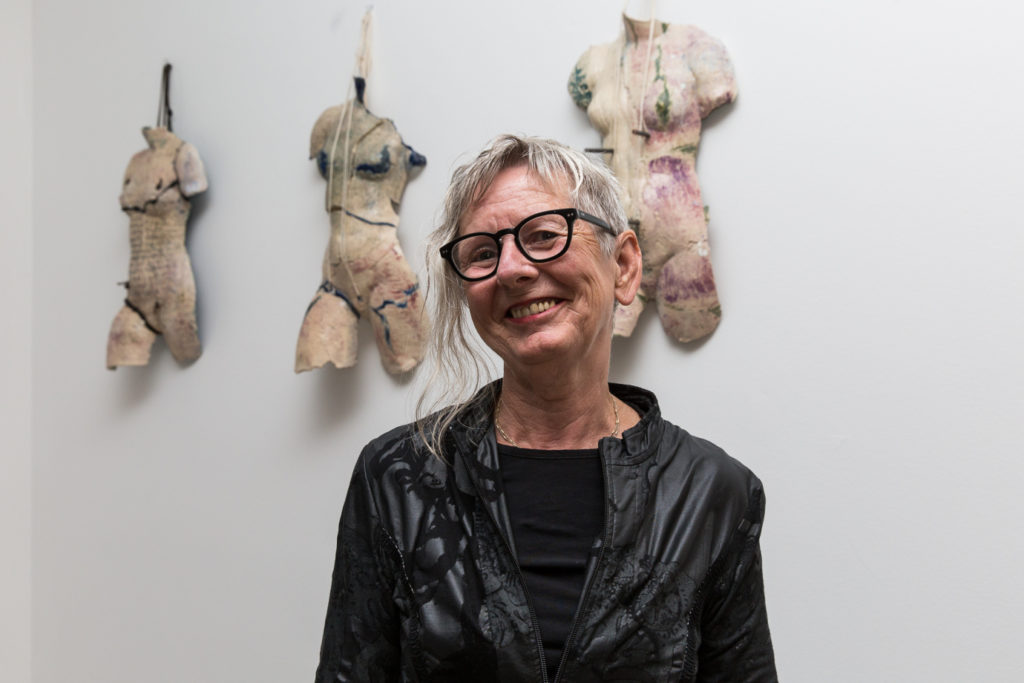 MIEKE VAN DEN HOOGEN – HUIJGEN focused her training on ceramics from 1987 to 1991 at the University of Maastricht.
MIEKE VAN DEN HOOGEN – HUIJGEN focused her training on ceramics from 1987 to 1991 at the University of Maastricht.
Since February 1992 he founded his own studio in Elsloo and then moved to Nijmegen since 1997.
During her studies at the University of Maastricht her interest was focused particularly on ceramics and about the expressive possibilities of the small fragment, where thanks to the lessons of Desiré Tonnaer (Maastricht) and Piet Hermans (Venray) she examined its potential, especially in monumental objects.
She write about her works: a woman’s body fascinates me not because it represents an ideal of beauty, but rather because it is a representation of a body that is experienced, whose emotions are read in the way of presenting itself to the spectator.
What I want to express in my work is the asymmetric. This is why my sculptures are made of clay and the contents are expressed in fragmentary form “.
Mieke also realizes works similar to vessels, made according to ancient Indian techniques, they are sometimes painted with the help of the airbrush and sometimes made with a silkscreen decoration. These works represent all the artist’s creative freedom and joy that experimented freely for the sake of creating new forms and color gradients.
